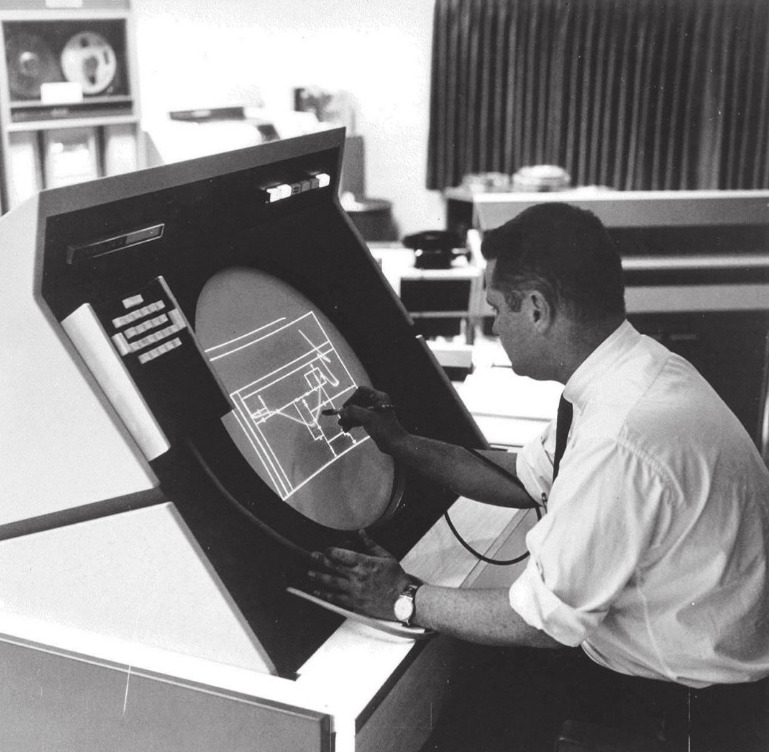Whoa, BSD predates V7? I had no idea.
I’ve been meaning to set up an 11 running 2BSD…
Artist / hacker from Providence, USA.
Whoa, BSD predates V7? I had no idea.
I’ve been meaning to set up an 11 running 2BSD…


Are the usb disk device names changing?


Yes, although the thing on my desk is just an x-term & media player, so “desktop system” doesn’t mean that much…
Mostly video performance (1080 vid stuttered badly, while it plays fine on the same machine under linux.) & compatability. (Not that I want to run a browser on my x-term, but it would be nice to have as a fallback option. Can’t install anything recent.) Oh, and extended attributes in the filesystem. I REALLY like being able to add name=val tags to a file. It’s immensely useful. That might be my favorite feature of linux? Funny.
Also, I was in the midst of switching from Solaris to Linux on my server, so it just seemed like a good idea to run the same OS on the desktop.


Old droid & Maemo Leste?
(That’s what I use.)


VERY simple. Time & node:
HH:MM node%
Except in the xterm I keep open for dealing with my camera. That’s time & last-word-in-cwd:
HH:MM dir%
Sometimes on a cellphone I will use battery charge percent:
BB%
And when I’m su’ed it’s just:
root%
Yup. Tried that, doesn’t work.
I do a lot of photography for a museum. In documenting historic artifacts (as in journalism) you’re not supposed to do any post processing. Not that I’d use a phone camera for those photos, but it’s an issue as those features creep into more serious cameras.


Void here too. I was mostly Solaris & OpenBSD for many years, Void is the first linux I’m happy to run on my main machines.
I realized I was going to be comfortable with Void when I saw in the docs that to config the network you just “put the commands in rc.local”. Ha ha. Yes, that’s how you’d do it in 7th Edition Unix! Back to the basics.


TCP/IP was… part of the BSD project? PDP-11 or VAX?
Our museum mostly collects minis from science & academia, so it leans REALLY heavily DEC.



Yeah, I’m familiar with VMS, and Cutler bringing a lot of the internal design to W/NT. (I’m told in particular a lot of the data structures for system calls in NT look like VMS.) My AIX experience has consisted entirely of “This is weird. This isn’t normal for Unix.” Ha ha. (I had a 1st gen RS/6000 at home briefly in the late 90s.)
And I do have a “grey wall” in my library:



My AIX experience is very limited. What was the VMS connection?


Windows NT ACLs come from VMS.
The Unix world has traditionally not liked ACLs because Multics had them, and Unix was an ultra-minimalist response to Multics.


TeX / LaTex documentation is infuriating. It’s either “use your university’s package to make a document that looks like this:” -or- program in alien assembly language.
I like postscript for graphic design, but not so much for typesetting. For a flyer or poster, PS is great.


As a hobby. I set up a tek-4015 running geometric fractals (trees, snowflakes, etc.) in an art gallery type installation once, about 20 years ago.


Weird. I’ve programmed tek vector graphics terminals, and I’d never heard about this before today.
Actually, what’s really cool is the giant vector displays a few companies made in the 60s:



It’s mostly linux now (except for most of the actual networking gear) but it wasn’t 20 years ago, so the internet is certainly “possible” without linux.


I had a 3g modem in my cisco router that I used to use for that, but when they shut down the 3g network I was never able to find another cheap sms-only service for the 4g version of the cisco modem. (So I switched to wifi & xmpp.)
I wrote my own software to use it, talking to the raw modem interface. Which, interestingly, uses an extension of the old “AT” modem command set. Weird.
Being able to write shell scripts that access sms is fantastic, I miss it.


I’ve bought about a half dozen of those dedicated boards. Very nice to be able to trivially attach switches & buttons to the computer.


I started with 4.3BSD on a VAX-11/750 in the mid 80s. At the time, you had to pay for a Unix license from AT&T, send a copy of the paperwork to UC Berkeley as proof, then they’d mail you a 9-track tape. (I think that was the process? I was just a lowly user on the system.)
Not exactly what we’d call “Free software”, but after all that you did end up with the full source code.
If the package manager on your old PC is keeping copies of everything it installs, just copy all of those packages over and go through the package manager on the new PC. Look under /var/cache